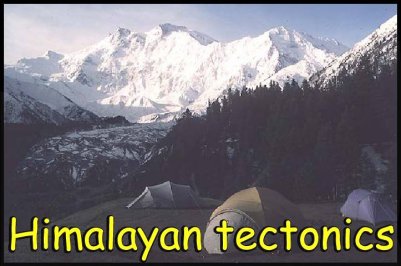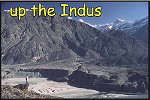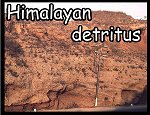|

The north (Raikhot) face of the mountain Nanga Parbat in the Himalayas
of Pakistan. The summit (8125m) rises some five kilometres above the old
mountaineering basecamp of Fairy Meadows in the foreground. Topography
like this is a sure sign of active tectonics - the mountain grows as the
crust thickens in response to continental collision.
|
 
 

Himalayan earthquakes
|
The collision between the continent of India with the rest of Asia has produced
some of the greatest mountain ranges of the modern world. As such it provides
a stunning natural laboratory for understanding how the crust deforms following
continent-continent collision (orogeny).
Because the system is still active we can use earthquakes to find out the pattern
of earth movements ("kinematics") and relate these to plate motions.
The northward drift of the Indian continent can be tracked using the spreading
history of the Indian ocean.
You can use this site to investigate the collision system - to gain understanding
of how the crust deforms, no only on the scale of the mountain ranges but also
close up. And you can see how the mountains shed material, building up thick
accumulations in nearly basins.

![]()



